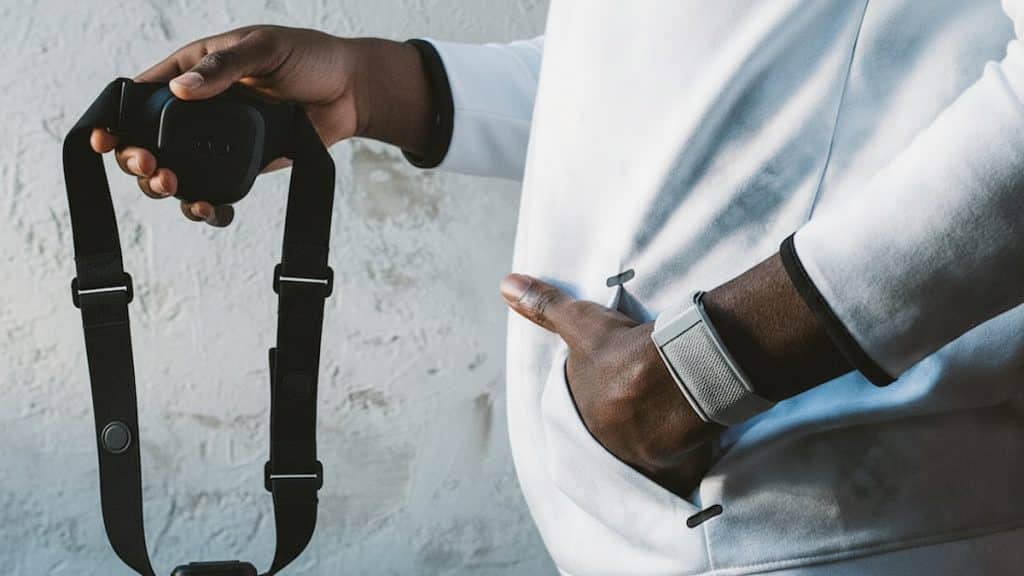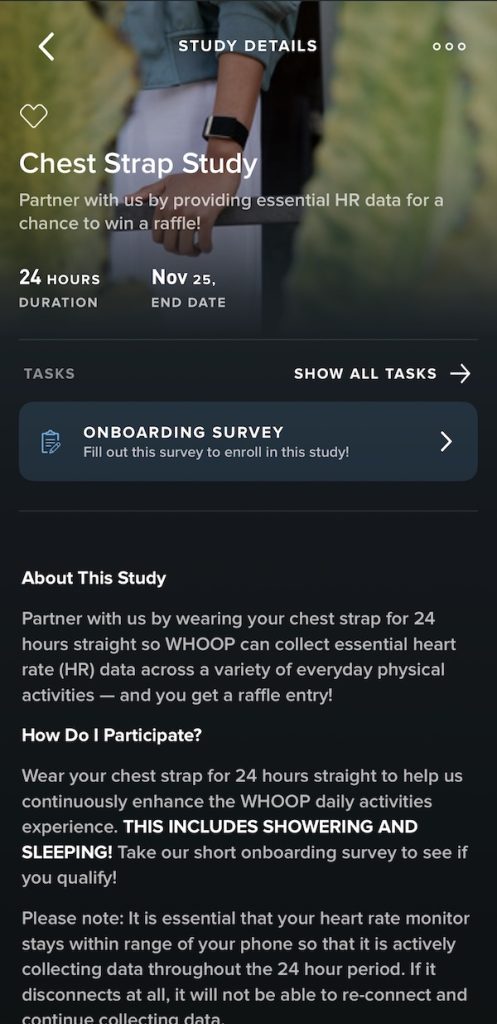
Is Whoop testing external chest strap support?
A small number of Whoop users have been invited to take part in a Chest Strap Study. The goal is to collect continuous 24-hour heart rate data, including during sleep and even showers. But this raises the question – is the company testing external chest strap support?
This isn’t something Whoop has supported before. The platform has always relied exclusively on its own optical sensor, whether worn on the wrist or bicep. You can stream your heart rate from the device to other apps, but the data only flows one way. External heart rate monitors, like a chest strap, have never been accepted as a source for the Whoop app. That limitation has frustrated users who want better accuracy during high-intensity or strength workouts.
Why this could matter
The study now running inside the Whoop app is the first clear sign that the company may be rethinking that stance. Participants are asked to wear a chest strap continuously for 24 hours, without any dropouts, so the company can gather a full day of heart rate data across all types of physical activity.
That wording is deliberate. They’re not just after a few peak readings during workouts. Whoop wants the entire day captured, including sleep and downtime, which is a core part of its recovery model. The fact they mention showering and sleeping suggests they’re looking for signal reliability across all use cases, not just training. This aligns with complaints users have raised for years, particularly around missed heart rate spikes during strength training or fast-changing intervals.

What Whoop might be working toward
It’s possible the data is simply for internal validation – cross-checking the accuracy of Whoop’s sensor against a chest strap baseline. But the way the study is framed leaves open the possibility that more is in the works.
Whoop may be evaluating how to integrate third-party heart rate sensors into its own ecosystem. This would be a major shift for a company that has always controlled both hardware and analytics. The move could let users tap into more accurate heart rate readings during workouts, while continuing to rely on Whoop for recovery and strain analysis.
That kind of hybrid setup is common with most other brands. Garmin allows pairing with chest straps or armbands for higher fidelity training data. Polar, Zepp Health and even Apple let you swap in external HR sources for better precision. Whoop is one of the few still standing apart, where all metrics depend on the accuracy of its optical sensor.
Worth watching
If Whoop is gathering 24-hour chest strap data from a subset of users, it means they’re at least considering a shift. Whether that ends with full support for external sensors, or simply improves the way their own sensors behave, is unclear.
But for those frustrated by inconsistent heart rate readings during intense workouts, this may be a step in the right direction. And if it results in more accurate strain or recovery scores, even better. It could also set the stage for Whoop to offer more flexibility in how users collect their workout data – without having to rely on only one type of strap or sensor location.
Subscribe to our monthly newsletter! Check out our YouTube channel.
And of course, you can follow Gadgets & Wearables on Google News and add us as a preferred source to get our expert news, reviews, and opinion in your feeds.
